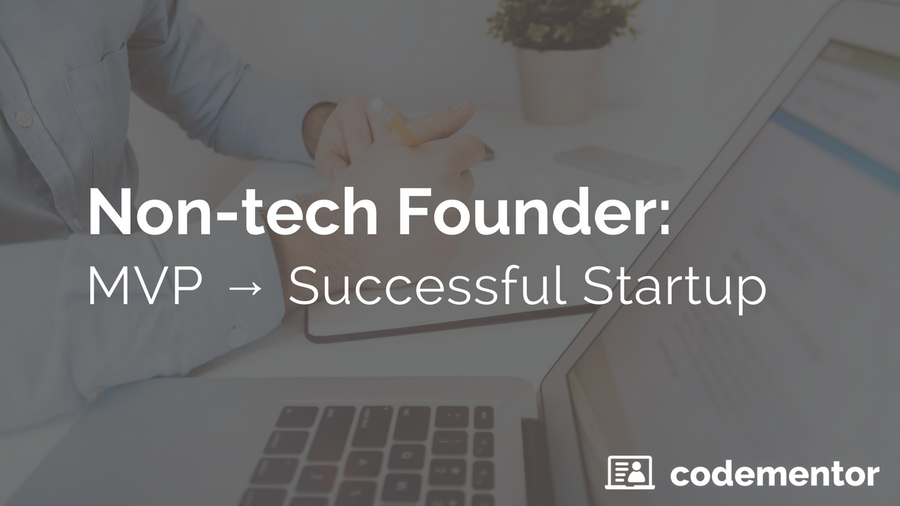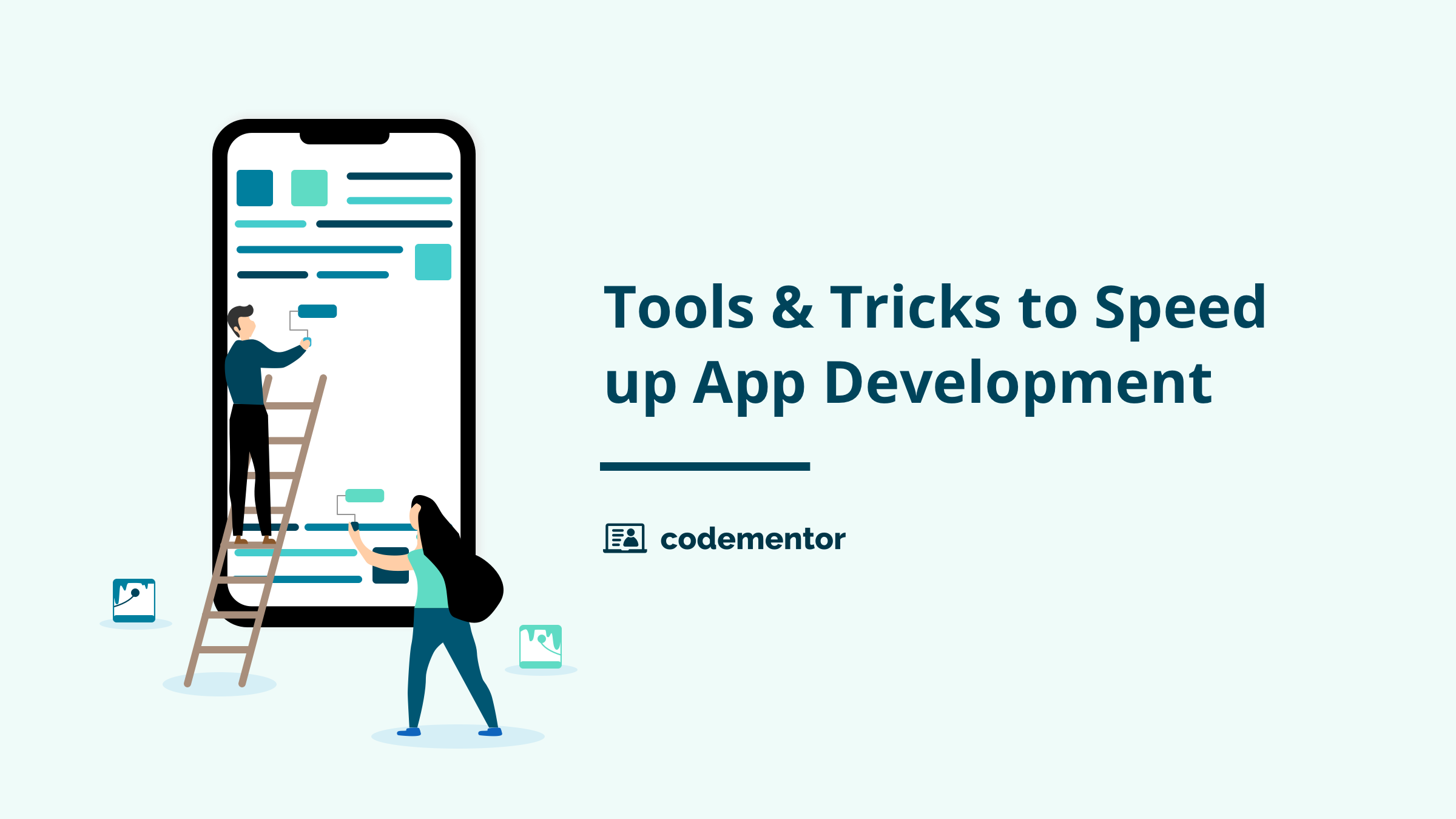This post has been updated: How Much Does it Cost to Make an App in 2019
Since 2011, the time smartphone users spend on using apps per month more than doubled. As apps become more and more central to smartphone users’ experiences, entrepreneurs are becoming more inclined to turn their ideas into apps.
How much does it cost to make an app? To answer this question, let’s take a look at the cost to make an MVP for some of the top 10 apps, as well as some additional factors like the app’s complexity, method of development, and development environment (i.e. iOS vs. Android).
Top 10 Mobile Apps
Source: Statista
According to a study done previously, the apps above were the most popular apps to date — many of which are still immensely popular today. Though the list looks slightly different in the U.S., with Amazon mobile and four of Google’s applications squeezing into the top ten list.
If you’re considering making an app, whether it's for mobile or web, it might be useful to consider these types of apps to provide you with a framework. Furthermore, since these apps contain certain features that are common to a wide range of apps, understanding the costs of these features is crucial to developing your own app. In this post, we'll dive into:
- How Much Does it Cost to Create an App?
- Cost to develop WhatsApp, Facebook, Instagram, and Uber
- Other Factors to Consider
How Much Does it Cost to Create an App?
App Development Cost = Development Time x Hourly Rate
A good way to investigate how much an app might cost is to start by looking at some of the most popular mobile apps in the world. Even though there’s no public data on the actual costs of developing these apps, it is possible to estimate the costs of developing similar apps. A common and straightforward way to estimate the cost is: (features x time) x hourly rate = cost:
It is important to understand the variations in hourly rates prior to calculating the total app development cost.
The median cost per hour of developing iOS apps (Android apps will be discussed later) in different regions is summarized in the graph below:
This graph suggests that the median cost of developing iOS apps in North America is around $150/hour while the cost in Indonesia is around $11/hour. Keep in mind that costs vary depending on the experience level of the app developer you hire. You can reference our most up-to-date stats on freelance iOS developer rates or mobile app developer rates for more information to consider.
Based on these rates, here’s a closer look at the cost of cloning an MVP for some of the top 10 apps:
How Much Does it Cost to Make WhatsApp?
WhatsApp is a real-time messaging application with a robust architecture and comprehensive features. Here’s a summary of WhatsApp’s basic features and their development time (in hours) based on sources such as Django Stars and TheAppSolutions:
Note: The setting adjustments may vary depending on the content of the “Settings” menu. This estimation includes profile settings, account settings, chat settings, notifications settings, and data usage settings.
Other costs include UI/UX design, project management, quality assurance, and DevOps. All factors combined will take somewhere between 390-495 hours.
In total, it will take somewhere around 1,157-1,484 hours to clone WhatsApp. At a rate of $150/hour (North America), WhatsApp will cost $173,550 - $222,600.
How Much Does it Cost to Make Facebook?
Without diving into operational storage costs, Ben Schippers, co-founder of HappyFunCorp, said
“If you asked me to build Facebook.com for you, I would quote you $500,000 and nine months of development and design time.”
Some of Facebook’s key features include:
- simple registration and login procedures
- automatic contact synchronization
- text/photos/videos sharing
- notifications
- messaging service
- other features such as groups and pages.
Facebook’s diverse features makes it significantly harder to predict its cost. However, it is still possible to come up with an estimation for the back-end and front-end development.
The most time consuming features to create are:
- news feed
- chat
- video calls
Even though chat and video calls have officially been separated to the Messenger app, the estimated cost below include features from both apps.
According to Indeema, the feed alone could take up to 450 hours. Why does it take so long to create the feed? The freedom of customization. Imagine a Facebook post on your feed — you’re presented with the person who posted it, the time it was posted, interactions with the post, and the type of content. If you like the post, you can choose to save it and/or turn on your notifications for this post. If you don’t like what you see, you can choose to hide the post and even unfollow whoever posted it.
The chat and the video features can amount to a development time of around 500 hours. In summary, the back-end development of both the Facebook app and the Messenger app can take anywhere from 1,500 hours to 1,700 hours while the front-end development can take around 1,300-1,400. In total, Facebook would take 2,800-3,100 hours to create. If we multiply 2,800-3,100 by $150/hr, the total cost of Facebook amounts to $420,000 - $465,000. This estimate is quite close to Schippers’ estimation.
How Much Does it Cost to Make Instagram?
Instagram is a rather complicated application to build due to image-filtering features and back-end image loads. Some of Instagram’s key features include:
- account authorization
- creating/editing profile
- messaging
- settings adjustment
- photos customization
- social media integration
- geolocation
- and advance search.
According to Henrik Wedelin, co-founder of Barkbox, it would cost somewhere between $100,000 to $300,000 to build an Instagram-like product over a three-to-six month period. Here’s an estimation of how much time it might take to develop an Instagram clone according to CleverRoad and SteelKiwi:
According to this estimation, Instagram would cost somewhere between $93,750-$141,000 to build. This estimation does not include the development time for features like an admin dashboard — which could take 60-80 hours — and other UI/UX design — which could take anywhere from 150-200 hours to develop. If the rough estimation of an admin dashboard and UI/UX development time are included as well, the estimated time will be somewhere between 835 and 1220 hours, which drives the cost up to $125,250-$183,000.
How Much Does it Cost to Make Uber?
Uber, a 24-hour on-demand service that connects riders and drivers, has successfully captured a significant share of the market in more than 563 cities in the world. Uber-like services must create two interfaces, one for the drivers (supply side) and one for the passengers (demand side). Some key features include:
In addition to the features listed, a payment gateway must be integrated as well. Here’s a breakdown of the passengers’ interface and its development time:
The total time required for developing the demand side of the platform is around 421-526 hours.
In regards to the drivers’ interface, these are the features and their development time:
Since there are less features on the drivers’ end, the development time is significantly shorter. The overall development time would be somewhere between 308 and 382 hours.
Considering the outlined features alone, the total time to develop an Uber-like app would be around 729-908 hours. Including the 60-80 hours for admin dashboard and 160-200 hours for UI/UX design, the total development time will be around 949-1,188 hours. The total cost to develop, then, results to around $142,350-$178,000.
All of the above figures are produced and consolidated by experienced teams around the world. Depending on who you ask and what metrics they use to measure the costs, the answer you get may vary a little.
What Are Some Other Factors to Consider?
Now that you have an idea of how much a top 10 apps cost to build, here are some other budget factors you need to consider when getting your app built:
How complex is your app?
One of the reasons why it’s so difficult to answer the question, “how much does it cost to make an app”, is because there are so many different kinds of apps. Though it is virtually impossible to describe all the existing apps on the market, there are three broad categories that outline apps’ complexity:
Apps without web servers
Apps without web servers do not have remote data servers. They often display information on different “lists.” These apps often have dropdown menus (master table) that allow users to select from. Once the user has selected an option, he or she may be presented with a second, more specific list. The user may continue to do so until he or she lands on a page with the desired information.
Some common examples of table functionality apps include diet planners, calendar apps, and email apps. The cost of developing these kinds of apps fall somewhere between $1,000 and $4,000. Some possible features that could drive up the costs of such apps include geolocation and third-party app integrations (i.e. social media platforms).
Apps with web servers
Unlike the first category, these apps house their data on remote data servers. The data for these apps are relayed between client side and server side. Furthermore, these apps often allow their users to perform searches and input data to produce the desired results. Since connecting apps to remote web servers requires more sophisticated programming and an API, the costs of these apps are higher and could range anywhere from $8,000 to $50,000.
Gaming apps
Though “gaming apps” seem somewhat self explanatory, it is the hardest category to put a price tag on. This category covers simple PONG type functionality all the way up to complex virtual reality games. For example, the developer of Flappy Hen, a clone of Flappybird, a popular game that is no longer available for download, spent around 40-50 hours creating his app. If you multiply 40-50 by $150, the app would cost $6,000-$7,500. However, a racing game that utilizes a gyroscope can easily cost up to $125,000 to create. A broad estimation of gaming apps would be $6,000 - $250,000.
Some other common features that increase technical complexities and drive up the cost of your app include: third-party integrations, admin dashboard, and use of hardware components such as Bluetooth, GPS, barometers etc. Having a clear idea of your scope would get you a more accurate cost estimation.
When creating the MVP for your app, you’ll also need to keep your long-term goals in mind. Are you developing a simple prototype that will most likely be rewritten later? Will this app be the backbone of your startup? These are all factors to consider before diving into cost estimation.
Who’s going to make your app?
In-house Developers
You can definitely consider hiring in-house developers, designers, and product managers to help develop your app! Alternatively, you could also hire a developer who can play all three roles. However, as global competition increases, hiring a full-time, quality, and jack-of-all-trades developer may be an extremely time consuming (not to mention expensive) process. If you plan to expand your app, you will most likely need to hire a few more developers (i.e. iOS, Android, back-end etc.). However, hiring an app team may be a costly commitment.
Would it be worth it to hire a full-time team for your MVP?
Would it be a suitable decision to spend weeks or months trying to find the all-star developer for your MVP?
The answers to the questions above largely depend on how much funding you have and what your long-term plan looks like. However, if you don’t have as much funding and under time pressure to produce an MVP, there may be other more suitable options.
Here's our comparison of in-house vs. freelance developers.
Development Agency
Paying an app development agency is another common solution. Many startups choose app development agencies because they come in a package. When you hire app agencies, you get a team of designers, developers, and project managers. Furthermore, many app agencies have significant amount of experiences to help them develop mature development procedures to help their clients out. There are obvious reasons why companies might want to hire app development agencies. However, going this route is by far the most expensive option. These development agencies can charge anywhere between $200/hour and $300/hour. If you do not have sufficient fund, this is not a viable option. Additionally, if you decide to take an agency-developed app in-house, you may experience more difficulties following their development logic.
Hiring Freelance Developers
Partnering with freelancers online to create your app is another popular option — not only is it highly affordable, high-quality freelancers can achieve the same level of quality for your ideal app as an app development agency can. However, there are several common downsides to hiring freelancers on traditional freelance platforms, such as upwork.com, freelancer.com, and guru.com.
-
Unqualified Developers
Hiring freelancers on traditional freelance platforms can feel like a huge gamble. Not only are the freelancers’ technical abilities largely unfiltered, their ability to coordinate and communicate are also largely unfiltered as well. For instance, many users who have hired freelancers from these platforms have complained about these five types of developers: “The Disappearing Act,” “The Fake,” “The Time Waster,” “The Desperate,” and “The Fraud.” Finding quality freelancers may be a difficult task if the platform you utilize does not have reliable pre-selection procedures that filter out low quality developers.
-
Lack of Project Management
Most traditional freelance platforms do not offer any project management software. Not only do they not have any integrated project management software, they often do not support popular project management tools such as Basecamp, Trello, and Asana. Lots of clients know what they want, but not how to manage it — without useful tools to help track projects, users are more likely to experience failures.
-
Reposting Projects
The problem of “middle-man freelancers” has gone rampant on many traditional freelance platforms. What is this “middle-man” phenomenon? For example, if you posted a project on one of these platforms at the price of $100, some “middle-man freelancer” may bid for the project and then repost it at the price of $80 or $60. If the platforms are charging freelancers 15%, you would essentially be paying $100 for $68 or $51 worth of work. Unregulated platforms indirectly created a hole for these middle-mans to exist.
These problems are common but not unavoidable. Some platforms, such as CodementorX, are able to resolve these issues by offering carefully vetted developers, effective project management procedures, and higher platform regulations, which prevent projects from being re-distributed.
Regardless who you choose to work with, you will most likely be creating and sharing proprietary information, and should have the proper legal protections in place. The most common way to safeguard trade secrets when working with third parties is the use of a non-disclosure agreement. For more on how to draft and use an NDA, you can reference this comprehensive guide on non-disclosure agreements.
Do keep in mind, when it comes to hiring freelancers, your cost could differ quite drastically depending on where the freelancers are located. See graph below:
Do you want to make an iOS or Android app?
Is it more expensive to develop iOS or Android apps? This is a highly debated issue that many disagree on.
For instance, Ken Yarmosh, the founder and CEO of Savvy Apps, a mobile design and development company in Washington D.C., believes that building Android apps are more expensive — he termed the extra cost for developing Android apps as “the Android Tax.” However, Facebook, YouTube, Twitter, Airbnb, and Uber spent less money on developing their Android MVP apps. Do these statistics contradict Yarmosh’s claim? How can the discrepancy in the data be explained?
The truth is, the cost per hour for developing iOS and Android apps are pretty much the same.
However, because there is a wider variety of Android devices and sizes of screen, both the design and the development sides are more complex compared to iOS. What this means is that the time it takes to develop Android apps may be 2 to 3 times longer than that of iOS apps. If we multiply the hourly rate by the time that it takes to develop respective apps, we can conclude that it is indeed more expensive to create Android apps. This is why many companies, including the top 10, choose to develop iOS apps before tackling Android apps. Hiring iOS developers can ensure a tailored user experience and optimal performance for your app, catering specifically to the iOS platform's unique features and requirements.
Here's an iOS Developer Hiring Guide if you've decided on iOS.
Final Thoughts
To recap - there are 4 aspects you should consider when you’re determining the cost to build your app:
- Complexities (type of app, remote data servers integration, third-party integrations etc.)
- Features (planning, design, features, infrastructure, app admin., testing, deployment)
- Human resources (i.e. internal app team, agency, freelancers)
- iOS vs. Android development
There are also other factors that we haven’t discussed that lie beyond the scope of the initial creation of your app. If you’re serious about bringing an app to the market or using it to build a startup, you should also evaluate the cost of support (i.e. hosting), marketing and advertising, human resources, and much more.
Don’t forget, Rome wasn’t built in a day! Believe in yourself and hire top-notch developers to help build your app. Before you do so, be sure you are prepared to hire a developer. We hope to see you in the app arena soon!

.png)


